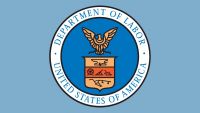Silica Exposure: Coverage Problems, Too?
Readers are certain to be familiar with silica exposure as a growing area of legal debate, and that OSHA standards have been the subject of significant dispute and discussion. What you may not know is that litigation in this arena has grown substantially over the last several years.
Case in point: A recent decision by the California Court of Appeals raises serious questions about whether contractors and subcontractors will have insurance coverage against personal injury suits arising out of silica exposure. The case is titled Garamendi v. Golden Eagle Insurance Co., 127 Cal. App. 4th, 25 Cal. Rptr. 3d 642 (Cal. App. 1st Dist., March 9, 2005).
The Underlying Lawsuit
In this case, Golden Eagle issued a commercial general liability (CGL) insurance policy to Pauli Systems, Inc. Pauli was one of 49 named defendants in lawsuits seeking recovery for alleged injuries to workers exposed to silica during sandblasting operations. The workers alleged they were exposed to silica-containing dust and suffered serious and permanent injuries as a result of the exposure. The claims in the suits included product liability claims against the manufacturers of the silica-containing products and sandblasting safety equipment, including defective respiratory equipment and the use of sandblasting equipment.
In the underlying complaints, the 49 defendants were collectively alleged to have "designed, tested, evaluated, manufactured, mined, packaged, furnished, supplied and/or sold abrasive blasting products, protective gear and equipment, safety equipment, products, etc." The complaints alleged further that the sellers of the silica-containing products failed to properly include adequate warnings of health risks and that defendants sold masks and respirators that were inadequate for blasting operations. The complaints contained no allegations describing the specific nature of Pauli's individual business or operations.
The Insurance Policy, Tender and Carrier Reaction
As mentioned before, Golden Eagle issued Pauli a commercial general liability policy, providing coverage for bodily injury or property damage. The policy's original pollution exclusion was replaced by a "Total Pollution Exclusion." The exclusion stated that the insurance did not apply to bodily injury or property damage that would not have occurred in whole or in part but for the actual, alleged or threatened discharge of pollutants at any time. The policy defined pollutants as "any solid, liquid, gaseous, or thermal irritant or contaminant including smoke, vapor, soot, fumes, acid, alkalis, chemicals and waste."
Pauli tendered the case to its carrier. Immediately prior to the tender, Golden Eagle went into insolvency. The tender was rejected by the insurance commissioner and coverage denied for the silica personal injury claims based on the pollution exclusion.
The Court's Analysis
The tender and the case were handled under "conservation" proceedings applicable to insolvent carriers. In this context, the California courts state that the only restriction on a trustees' power to reject claims is that the state's action be reasonably related to the public interest and not arbitrary or discriminatory.
The claimant argued that the pollution exclusion did not apply and that Golden Eagle was obligated to provide a defense and coverage. The court disagreed. The court noted that federal regulations identify silica dust as an air contaminant, and that the widespread dissemination of silica dust was an incidental byproduct of sandblasting operations "most assuredly is what is 'commonly thought of as pollution' and 'environmental pollution,'" the applicable standard of inclusion within the pollution exclusion from coverage. The court ruled that the pollution exclusion applied, and therefore there was no coverage.
Analysis
The bad news? In the Golden Eagle case, the broad reading of the pollution exclusion found in the CGL policy could have an impact on courts in other states reviewing similar cases for coverage of silica-related claims.
Now, the good news: There are some factors that may limit widespread application of the analysis in this decision. First, the case involved an insolvent carrier and therefore a very limited type of review. Second, this case involved the specific terms of that pollution exclusion. Your pollution exclusion might be more explicit and may not bar coverage.
The main point to take from this case is you need to complete a thorough review of your specific policies and exclusions, know and understand your own insurance coverage, and do your best to maximize coverage against this type of exposure.
About the Author
Tim Hughes is Of Counsel to the law firm of Bean, Kinney & Korman in Arlington, Va. He can be reached by email at thughes@beankinney.com or by phone at 703-671-8200.
This article is not intended to provide legal advice, but to raise issues on legal matters. You should consult with an attorney regarding your legal issues, as the advice you may receive will depend upon your facts and the laws of your jurisdiction.















